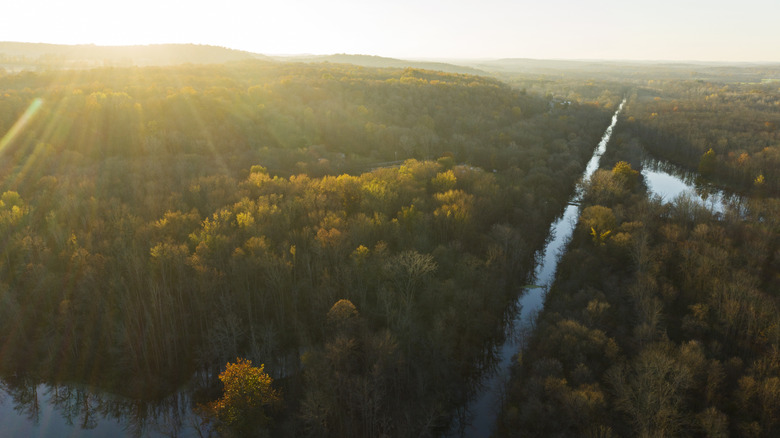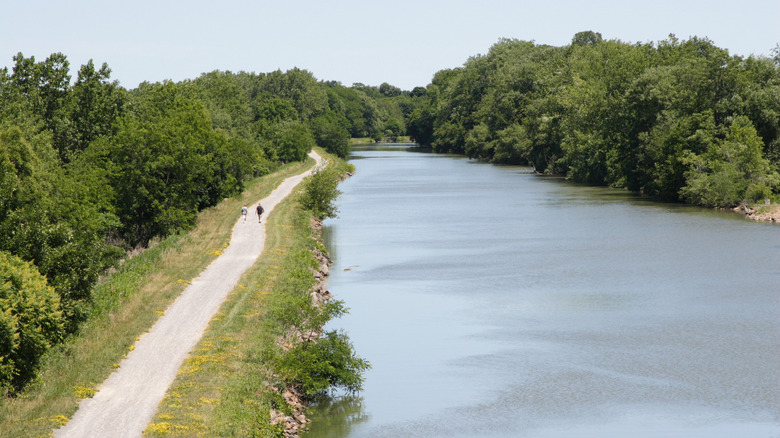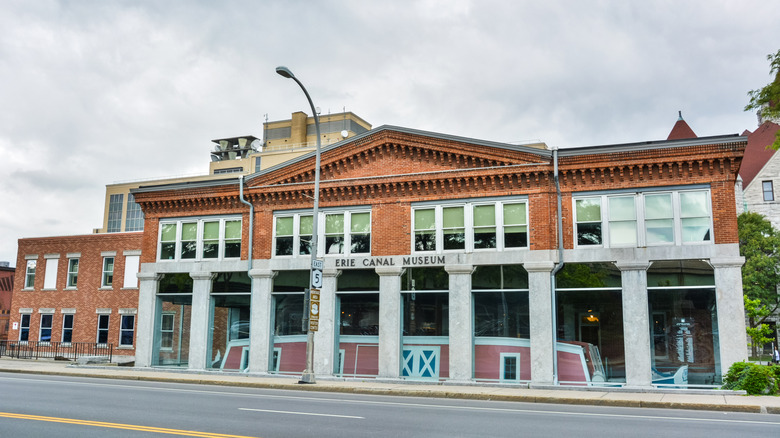Upstate New York's Calm 524-Mile Canal Waterway Passes Through Picturesque Villages And Historic Buildings
Completed 200 years ago, the Erie Canal is one of America's greatest achievements. It was an ambitious project to connect the Great Lakes to New York City, but one that ultimately paid off, helping to bolster New York's power as a major shipping port. While the commercial use of the canal is nothing like it was in its heyday, the Erie Canal has become a destination where travelers, by land or sea, can find history and outdoor adventure.
There are 524 miles of continuous navigable waterway, including 365 miles of canals, forming a trail that connects over 200 exciting, reemerging towns and cities, like Rochester, Buffalo, Syracuse, and Albany. The Erie Canal is a great reference point for an Upstate road trip because you can follow it up to Lake Erie or Buffalo, and then go on to see Niagara Falls.
Along the way, there are a few must-stop towns for history buffs who want to learn more about the ambitious construction or infrastructure enthusiasts interested in locks and bridges, as well as launching off points for hiking, biking, and paddling adventures. The canal is also widely used by private watercraft for bucket-list-worthy boating adventures, such as America's Great Loop.
The history and influence of the Erie Canal
Before it was finally completed in 1825, it took eight years to build the 363-mile canal that would transform New York City into the country's busiest port during the pivotal moment of the Industrial Revolution. It would also transform New York State, and as many new towns popped up along it to serve the freight industry running up and down the new canal, it earned the nickname "Mother of Cities."
However, it wasn't just cargo that traveled up and down the canal. As the population grew in the state's interior, ideas like abolitionism and women's suffrage spread. While we have the legacy of these movements amended into the Constitution, you can visit the physical landmarks of the social trailblazers who helped make it happen at places like festive Seneca Falls, which hosted the first Women's Rights Convention in 1848.
There are many landmarks that pay tribute to monumental figures like Frederick Douglass and Susan B. Anthony, who are both buried in Rochester's Mount Hope Cemetery. To this day, the women's rights activist's grave is covered with I Voted stickers after every election day. Also in Rochester, the Frederick Douglass Walking Tour guides you through important sites of African American history, such as former stops on the Underground Railroad and the spot where Douglass delivered his most famous speech.
The best things to do on the Erie Canal
Dive deeper into the history of this engineering marvel at the Erie Canal Museum in Syracuse, which has exhibits detailing the canal's construction and financing and a replica of a canal boat that once carried goods. To see the engineering of the canal system in action, drive about 150 miles west to Lockport, where you can take a tour of a flight of five 19th-century locks (alongside the modern ones).
If you prefer to be outside, consider hiking or biking a section of the Erie Canal Trailway, which stretches the entire length of the canal. Visit nature reserves like Montezuma National Wildlife Refuge, a 10,000-acre bird sanctuary near Seneca Falls, or the Mohawk River section of the canal, which is farther east between the towns of Albany and Rome. This part of the canal is in the foothills of the Adirondacks, the state's awe-inspiring gateway to the outdoors.
Of course, the best way to experience the canal is on the water, and you'll have dozens of options for that too. For something relaxing, try Erie Canal Cruises to explore the Mohawk Valley near Herkimer, or explore by paddle power and rent a kayak from the Erie Canal Boat Company in Fairport or Lockport.


